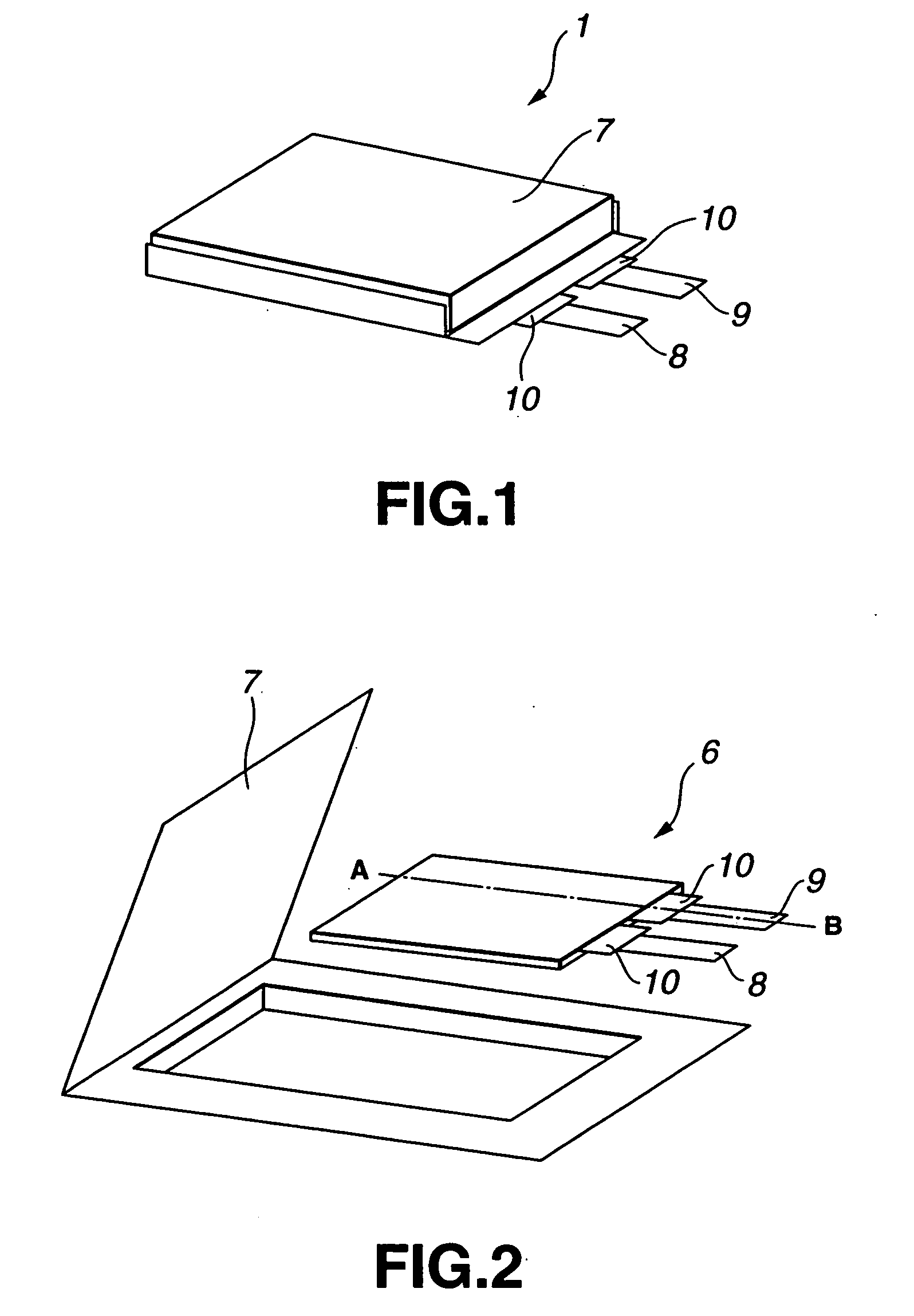Gel electrolyte battery
a gel electrolyte and battery technology, applied in the direction of non-aqueous electrolyte cells, secondary cells servicing/maintenance, sustainable manufacturing/processing, etc., can solve the problem that the electrolytic solution cannot sufficiently penetrate the active material layer of the electrode, the use of electrolytic solutions tends to complicate the manufacturing process or render it necessary, and the difficulty of fabricating batteries of variable shapes such as those depicted above, etc. problems, to achieve the effect of improving the production yield
- Summary
- Abstract
- Description
- Claims
- Application Information
AI Technical Summary
Benefits of technology
Problems solved by technology
Method used
Image
Examples
examples
[0072] The batteries were prepared as indicated below to check the meritorious effect of the present invention.
example
[0073] First, a positive electrode was prepared as now explained. First, 91 parts by weight of LiCoO2, with a mean particle size of 5 μm, as a positive active material, 6 parts by weight of carbon black, as an electrifying agent, and 3 parts by weight of polyvinylidene fluoride, were mixed together to give a positive electrode mixture. This positive electrode mixture was then dispersed in N-methyl pyrrolidone, as a solvent, to form a paste.
[0074] The positive electrode mixture paste was then coated evenly on both surfaces of a strip-like aluminum foil, operating as a positive electrode collector, with a thickness of 20 μm, and the resulting mass was dried. The dried mass was compression-molded by a roll press to form a positive active material layer. An aluminum lead was welded to a portion of the positive electrode collector not carrying the positive active material layer to form a positive electrode terminal to complete a positive electrode.
[0075] A negative electrode was prepar...
PUM
| Property | Measurement | Unit |
|---|---|---|
| pressure | aaaaa | aaaaa |
| temperature | aaaaa | aaaaa |
| temperature | aaaaa | aaaaa |
Abstract
Description
Claims
Application Information
 Login to View More
Login to View More - R&D
- Intellectual Property
- Life Sciences
- Materials
- Tech Scout
- Unparalleled Data Quality
- Higher Quality Content
- 60% Fewer Hallucinations
Browse by: Latest US Patents, China's latest patents, Technical Efficacy Thesaurus, Application Domain, Technology Topic, Popular Technical Reports.
© 2025 PatSnap. All rights reserved.Legal|Privacy policy|Modern Slavery Act Transparency Statement|Sitemap|About US| Contact US: help@patsnap.com



